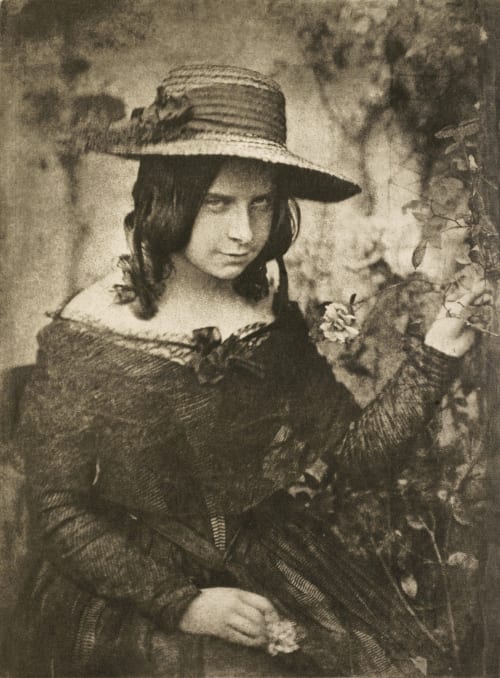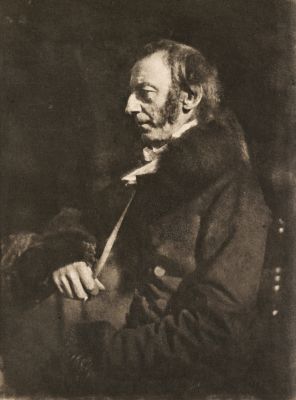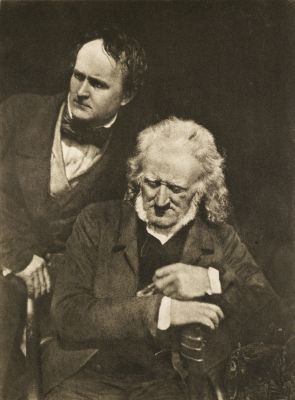
Title
Girl in Straw HatArtists
Hill, David Octavious (Scottish, 1802-1870)Adamson, Robert (Scottish, 1821-1848)Publication
Camera Work XXXVIIDate
1890 plate (1843-1847 negative, 1912 print)Process
PhotogravureAtelier
T. & R. Annan & SonsImage Size
21.5 x 15.8 cm
Miss Mary McCandlish A young girl in her Sunday best is sitting in front of a patch of light on a wall, close to a climbing rose. Judging by her straw hat and and off-the-shoudler dress, it is summer. As she absentmindedly picks at a flower, her eyes stray into the distance. There is a mixture of mistrust, curiosity, and coquettishness in her gaze—an ambivalence that makes this portrait so charming. It is a perfect expression of the perennial problem of adolescence—indecision. Hill found his model among the upper-middle class of Edinburgh. He generally posed his models outdoors, where sunlight permitted short exposure times. When taking portraits of artists, poets, scholars, and inventors, he took props into the garden and constructed mock interiors. Hill employed the calotype process developed by Fox Talbot and skillfully took advantage of the soft-focus effects of the paper negative to create a wonderful play of halftones—a chiaroscuro inspired by Rembrandt, his great idol. [1]
Reproduced / Exhibited
Kruse, Margret. Kunstphotographie Um 1900: D. Sammlung Ernst Juhl; Hamburg: Museum für Kunst u. Gewerbe, 1989 pl. 491
Langer, Freddy, Timm Starl, and Wilfried Wiegand. Icons of Photography: The 19th Century. Munich: Prestel, 2002. p. 21
Roberts, Pam. Photohistorica: Landmarks in Photography : Rare Images from the Collection of the Royal Photographic Society. New York: Artisan, 2000. p. 54
Stevenson, Sara, and John O’Neil. Printed Light: The Scientific Art of William Henry Fox Talbot and David Octavius Hill with Robert Adamson. Edinburgh: Scottish National portrait gallery, 1986. plate 11.
References
[1] Langer, Freddy, Timm Starl, and Wilfried Wiegand. Icons of Photography: The 19th Century. Munich: Prestel, 2002. p. 20







